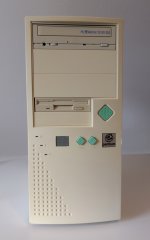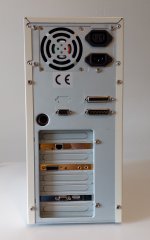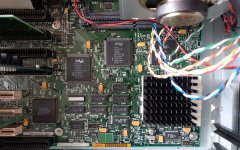purple toupee
Member
Hey friends, I'd appreciate a sanity check on a theory. I've been assembling PCs since the late 80s, but I haven't spent a ton of time with it since it got old, so I'm far from an expert here.
I recently bought a supposedly-working Intel "Premiere/PCI II" Plato 430NX motherboard with a 90MHz P54C in it. The system appears healthy, and will run the memory check, but it hard freezes after. Whether or not I try to enter setup, it just freezes (keyboard stops responding to lock keys, etc). My theory is that this *might* be due to the original Dallas RTC, but I'm a little skeptical because this seems like an extreme reaction to an old RTC (and it's a hard fix to validate, for me).
What I've tried:
Possible causes?:
What do you all think?
I recently bought a supposedly-working Intel "Premiere/PCI II" Plato 430NX motherboard with a 90MHz P54C in it. The system appears healthy, and will run the memory check, but it hard freezes after. Whether or not I try to enter setup, it just freezes (keyboard stops responding to lock keys, etc). My theory is that this *might* be due to the original Dallas RTC, but I'm a little skeptical because this seems like an extreme reaction to an old RTC (and it's a hard fix to validate, for me).
What I've tried:
- unplugging all things (even video card) except for RAM, case LEDs/buttons/speaker, keyboard, CPU & cpu fan.
- clear CMOS jumper (was actually set to clear when I got it)
- many repeat attempts
Possible causes?:
- RTC -- it's an original, soldered Dallas RTC. I have seen the "Dremel away the side & solder a CR2032" fix. Is that what I'm left with?
- Bad RAM? Seems unlikely, but I can't get to memtest so I can't rule it out.
- Random hardware failure somewhere in the board...? (in other words, "everything else" I guess)
What do you all think?



